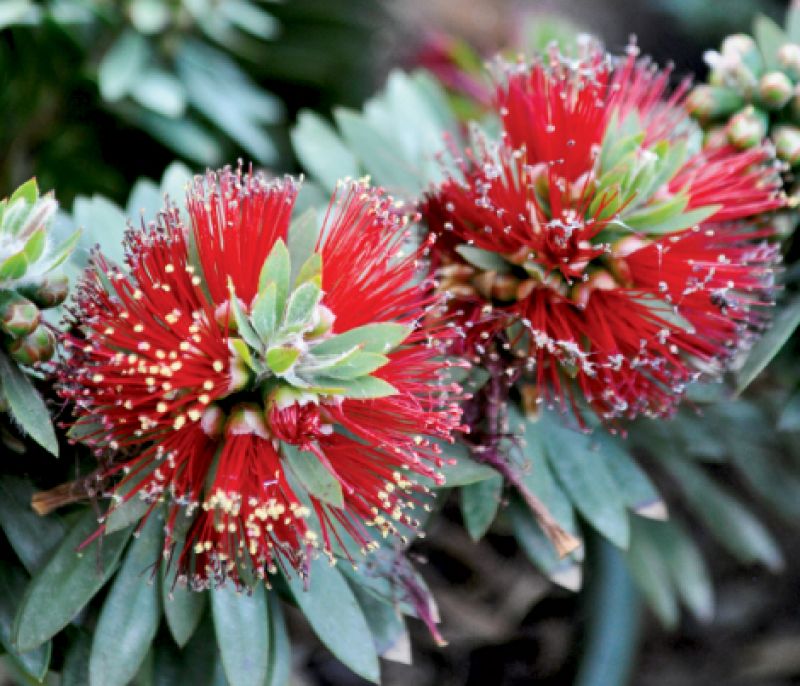
With its fuzzy foliage, the bottlebrush beckons hummingbirds and bees to the garden. Pick a variety to fill our landscape with bright blooms and buzzing activity. Looking to add tropical color without the endless chore of planting annuals? Thanks to our fine friends down under, a Charleston gardener can easily welcome Australia native the bottlebrush to the landscape. This water-wise evergreen shrub will brighten the garden with fiery red blooms while creating a welcoming food source for hummingbirds and butterflies. With a common name inspired by its unique cylindrical bloom structure, the callistemon genus includes approximately 38 species of sun-loving shrubs.
Little John (Callistemon citrinus )
Only reaching three feet in height and five feet in width at full maturity, this dwarf variety is ideally suited for smaller spaces. Its petite stature and slower growth rate also make it an excellent contender for a favorite container. ‘Little John’ can be trained as a specimen plant or bonsai. The densely compact blue-green foliage releases a fragrant lemon scent when crushed. For high visual impact, try planting multiples together to create one large mass of color.
Hardiness: Zones 8-11
Light: Full sun
Soil: Well-draining, sandy loam
Water: Once established, it only needs occasional watering.
Fertilizer: Feed general-purpose fertilizer in spring before new growth appears.
Maintain: Prune after flowering.
Red Cascade (Callistemon viminalis)
If you have an outdoor patio or seating area that is in need of a little pizzazz, consider relaxing under the elegantly weeping canopy of this fast-growing variety that can reach up to 25 feet. When properly pruned by removing lower limbs, its foliage of sweeping branches will offer up huge cascading blooms in the spring and fall. These flowers produce the much-needed nectar to feed hummingbird and butterfly populations.
Hardiness: Zones 8-11
Light: Full sun
Soil: Well-draining, sandy loam
Water: Once established, it only needs occasional watering.
Fertilizer: Feed general-purpose fertilizer in spring before new growth appears.
Maintain: Prune after flowering.
Woodlander's Hardy (Callistemon sp.)
Lowcountry gardeners located farther from downtown's subtropical microclimate should choose this hardier variety, which has ben said to survive in Zone 7. It will reach up to five feet tall with up to a five-foot spread. Its narrow leaves add great texture and color to floral arrangements.
Hardiness: Zones 7-9
Light: Full sun
Soil: Well-draining, sandy loam
Water: Once established, it only needs occasional watering.
Fertilizer: Feed general-purpose fertilizer in spring before new growth appears.
Maintain: Prune after flowering.